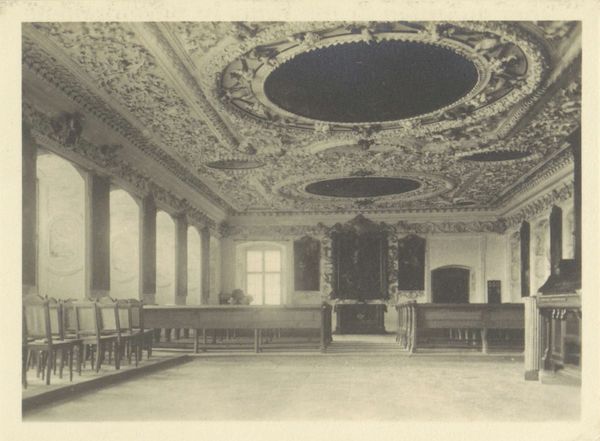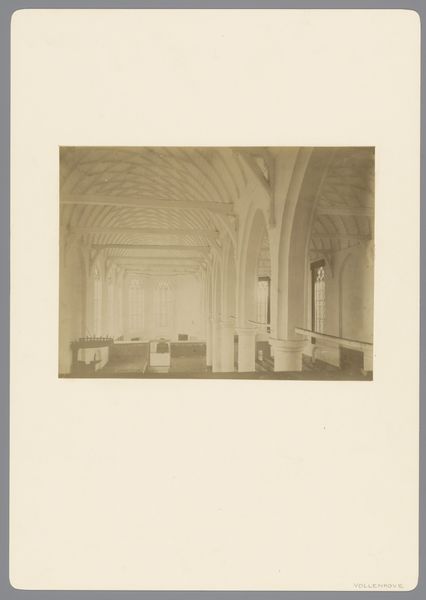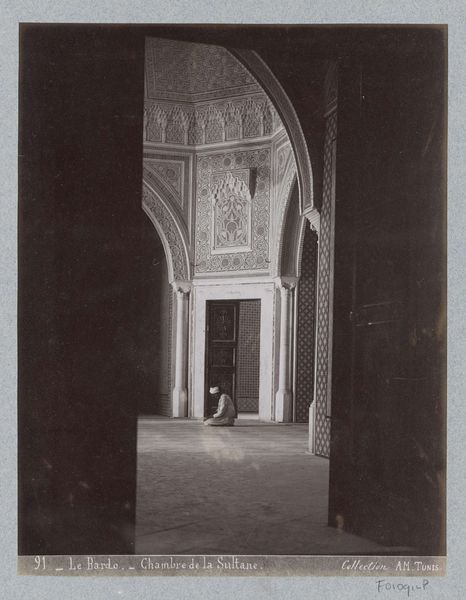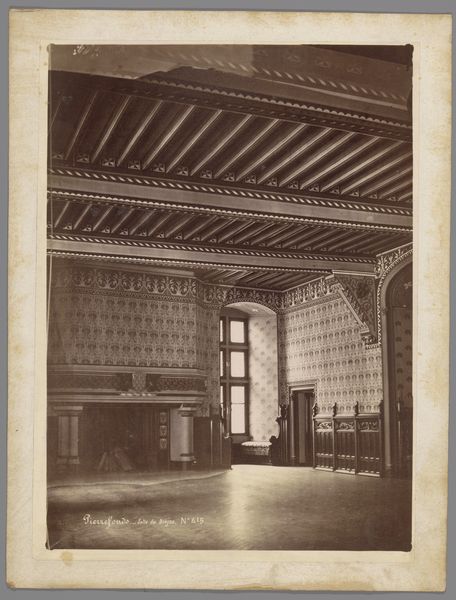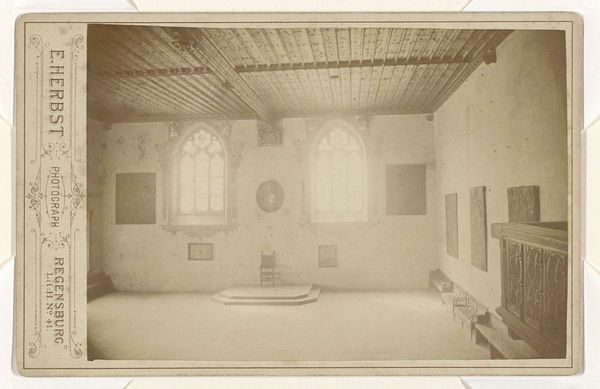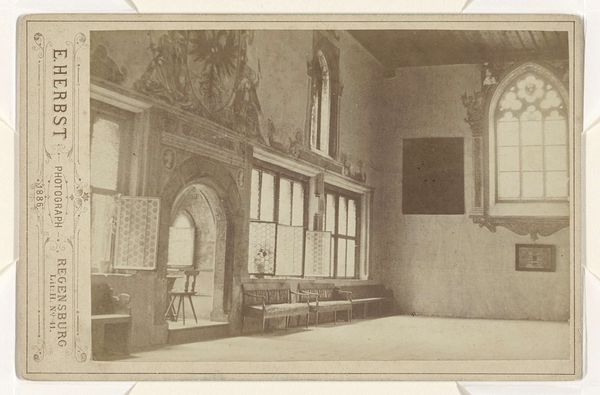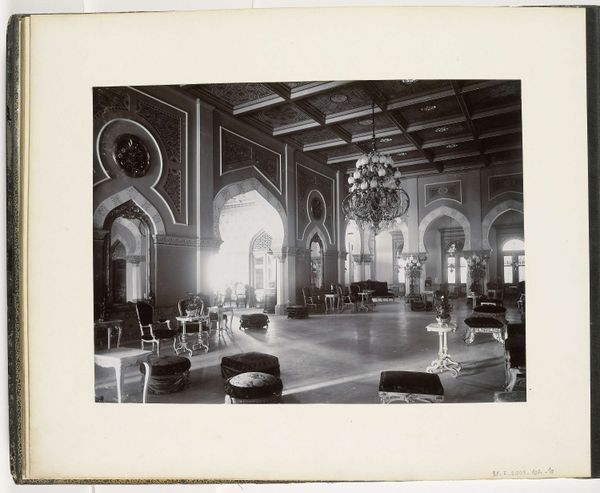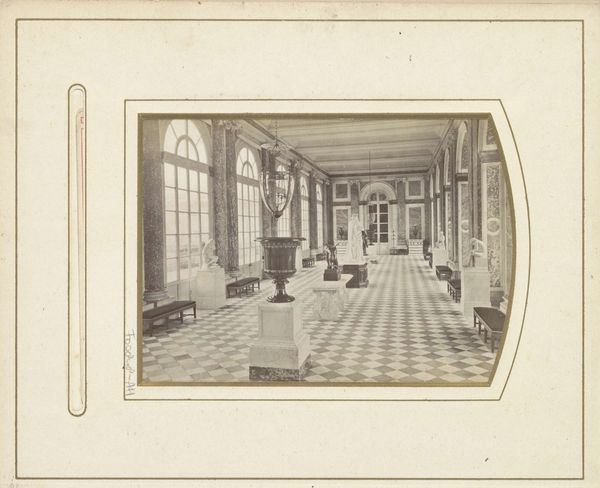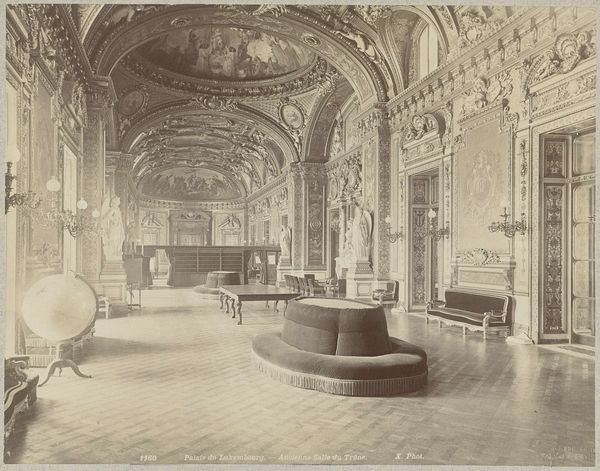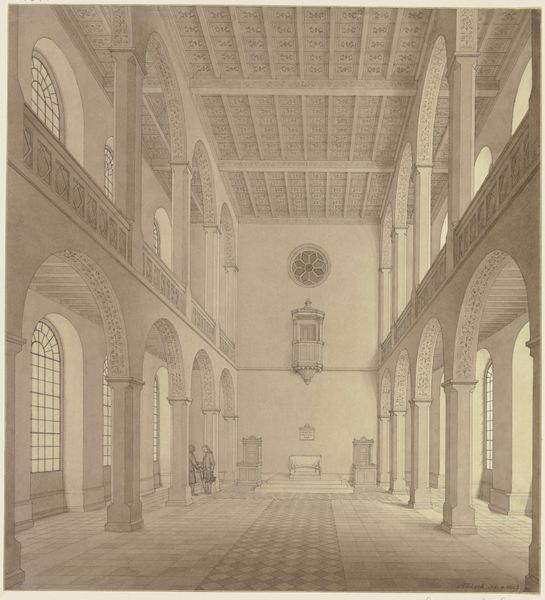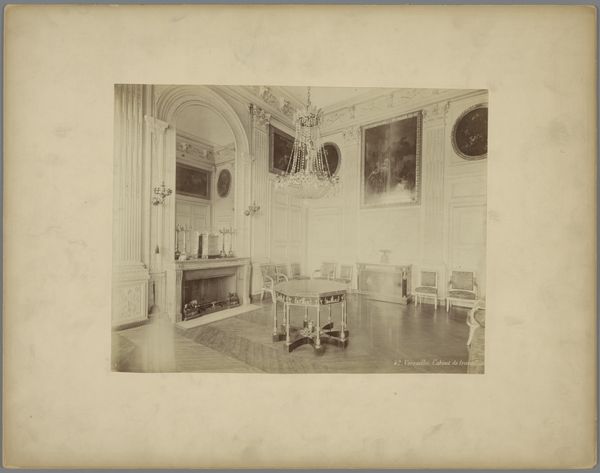
print, photography, architecture
# print
#
light coloured
#
landscape
#
archive photography
#
photography
#
photojournalism
#
geometric
#
architecture
#
statue
Dimensions: height 173 mm, width 230 mm
Copyright: Rijks Museum: Open Domain
Curator: This is a print titled "Gezicht in Paleis Het Loo in Apeldoorn" or "View of Palace Het Loo in Apeldoorn" by Richard Tepe, dating between 1900 and 1930. It's currently held in the Rijksmuseum collection. Editor: It feels…still. Serene, almost, despite the strong geometry. The light streaming through those massive windows makes for these really graphic shadows on the floor. A touch melancholic too, maybe? Curator: Precisely. Tepe’s photographs are less concerned with grand spectacle and more attuned to the quieter rhythms of daily life within these imposing spaces. The herringbone pattern of the floor, for example, creates a repetitive rhythm against the verticals of the columns. He's less interested in the opulence than in the architecture itself. Editor: And you feel the cool of the stone just looking at it. It really highlights the labour involved in creating these palaces, from quarrying stone to laying all those bricks so perfectly. Curator: Yes, absolutely. The palace was transformed multiple times across several centuries and it reflects shifts in production, availability of materials, and of course the evolving status of its inhabitants. One can really follow the changing social conditions simply by tracing the use of particular types of stone, the forms of windows or decorative moldings through history. Editor: There is something slightly haunting in its stillness, especially considering the amount of labour required to build something like this. Do you ever wonder who mopped these floors? Or polished those chandeliers? Curator: Always. Looking closely, we see Tepe’s contribution is not only his photographic skill, but in what he has decided to capture. He’s consciously created a document of its time, and a rather compelling one at that. Editor: I'm now reflecting on my current perspective after this discussion, my thoughts about how much these historic places resonate across time because so much of the human essence remains woven within the architecture, if only we are able to see. Curator: Indeed, and examining the history and labor interwoven in spaces like this is essential. These buildings are ultimately manifestations of social organization frozen in time, with Tepe holding that moment.
Comments
No comments
Be the first to comment and join the conversation on the ultimate creative platform.
